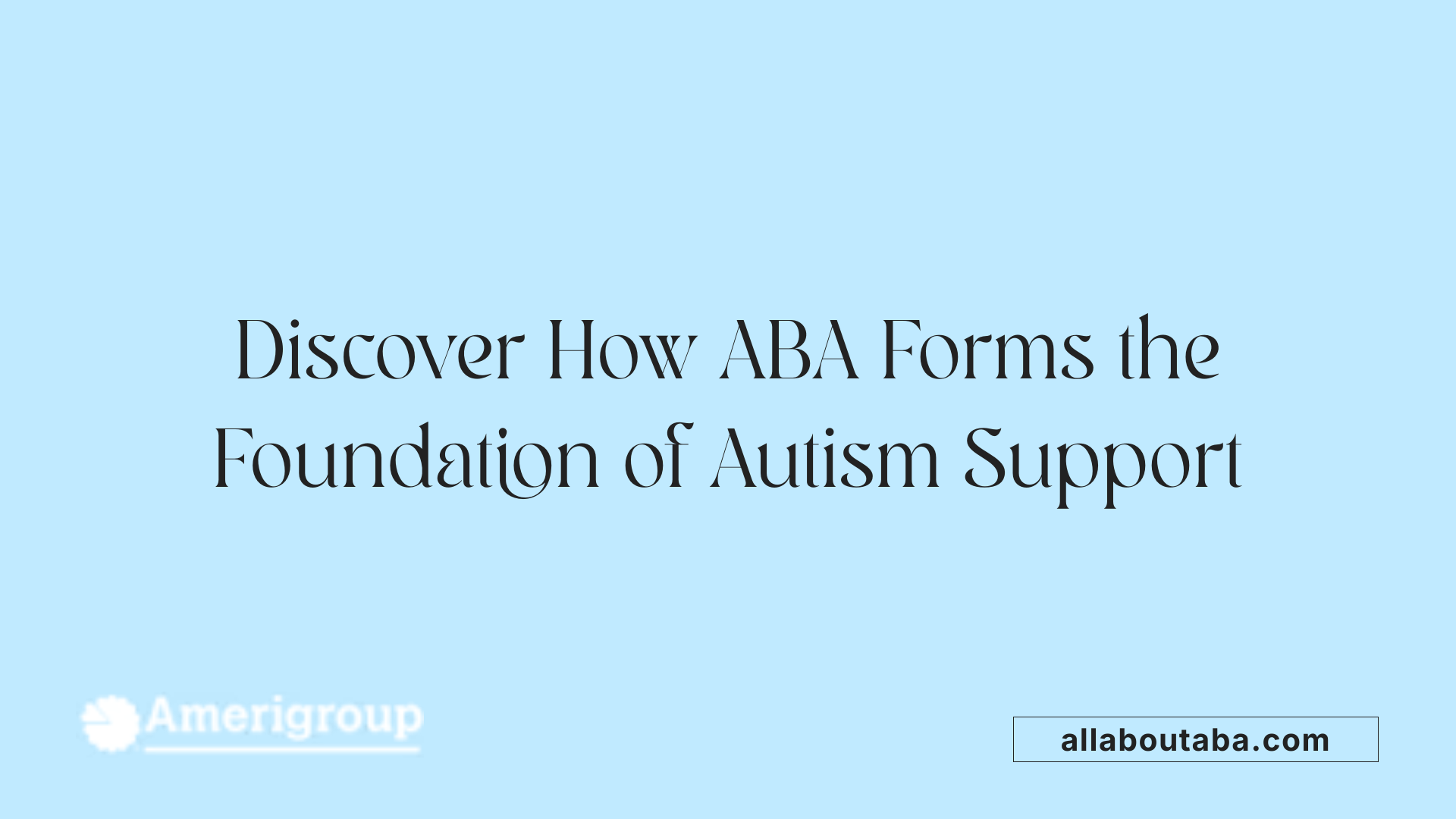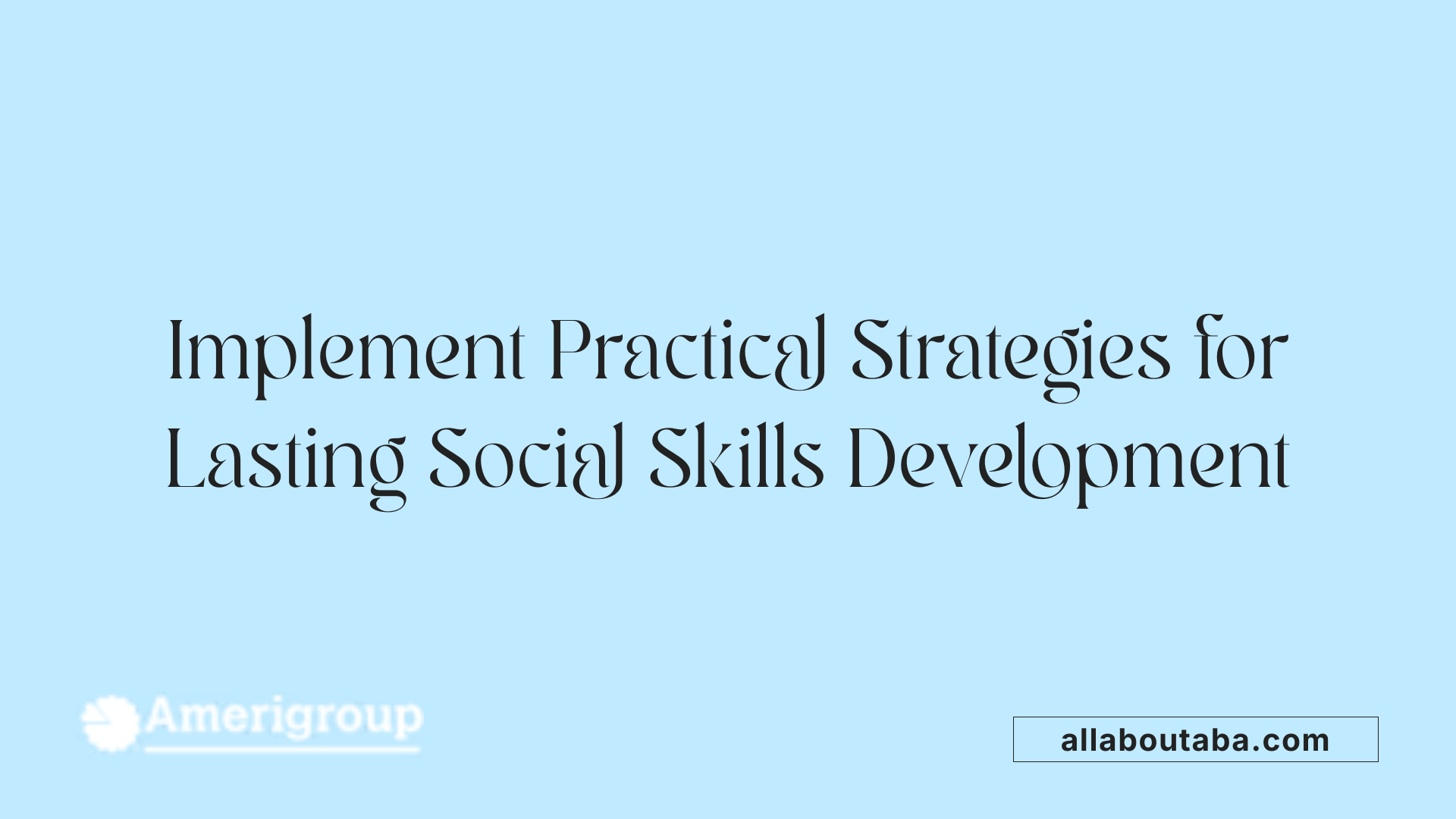Understanding the Challenges and Opportunities
Children with autism spectrum disorder (ASD) often face unique challenges in social interaction, including low levels of social engagement, decreased eye contact, and difficulties with social affect. Despite these hurdles, many children with autism have dormant social abilities that can be activated with the right support and interventions. This article explores evidence-based approaches and practical strategies designed to encourage social interaction in children with autism, empowering families, educators, and therapists to foster meaningful social connections.
Applied Behavior Analysis (ABA): A Cornerstone of Autism Therapy

What is applied behavior analysis (ABA) therapy?
Applied Behavior Analysis (ABA) therapy is a scientifically based approach to treating autism. It focuses on improving social, communication, academic, and daily living skills by analyzing behaviors and their triggers. Through understanding antecedents, behaviors, and consequences, behavior analysts design individualized interventions aimed at increasing positive behaviors using strategies like positive reinforcement.
How does ABA increase positive social behaviors?
ABA uses structured teaching methods such as discrete trial training (DTT) and naturalistic approaches like Pivotal Response Treatment (PRT). These strategies encourage children to engage in desired behaviors by embedding rewards directly related to their responses. For example, embedding social interactions as reinforcers can motivate children with autism to initiate and increase social engagement, eye contact, and positive affect. This reinforcement strengthens the connection between social cues and communication, fostering improved social abilities and helping reshape developmental trajectories.
What is the role of behavior analysts and therapy settings?
Qualified professionals, such as Board Certified Behavior Analysts (BCBAs), create and supervise ABA programs tailored for each child’s needs. Therapy can take place in diverse settings including homes, schools, and community environments, allowing learning to generalize across contexts. Behavior analysts continually assess progress and adjust programs to ensure the most effective interventions are applied, making ABA a flexible and comprehensive treatment option.
| Aspect | Description | Impact on Therapy |
|---|---|---|
| Core Principles | Analyze antecedents, behaviors, consequences; use reinforcement | Increase desired behaviors, decrease challenging ones |
| Techniques | DTT, PRT, Early Start Denver Model | Enhance skill acquisition and generalization |
| Professionals Involved | Board Certified Behavior Analysts | Ensure individualized and evidence-based treatment |
| Therapy Settings | Home, school, community | Promote consistent learning across environments |
Qualified Providers of ABA Therapy: Who Delivers the Care?

Who provides ABA therapy for individuals with autism?
ABA therapy is delivered by a team of specialized professionals trained in behavioral analysis and autism interventions. The main providers include Board Certified Behavior Analysts (BCBAs), who typically hold advanced degrees and design comprehensive treatment plans tailored to each individual’s needs.
Supporting them are Board Certified Assistant Behavior Analysts (BCaBAs) and Registered Behavior Technicians (RBTs), who implement therapy under supervision. These roles are critical in maintaining consistency and quality of care.
In which settings is ABA provided?
ABA professionals work across varied environments, including:
- Clinics and specialized centers
- Hospitals
- Community and home-based programs
- Schools and educational settings
Many providers operate within agencies or healthcare organizations that require specific credentialing and standards.
Why is quality and certification important?
Certification ensures that ABA providers have met rigorous training and ethical standards, safeguarding effective treatment delivery. Insurers and programs like Optum credential providers to maintain high-quality care standards.
Certified professionals are dedicated to fostering independence and improving functional skills for children and adults with autism, making credentialing a vital component of successful ABA intervention.
Core ABA Principles That Promote Social Interaction

What are the core principles behind ABA therapy?
Applied Behavior Analysis (ABA) is fundamentally rooted in understanding how behaviors are influenced by their environment. The core principles rely on the scientific study of learning, focusing on the interaction between antecedents (what happens before a behavior), behaviors themselves, and consequences (what follows). This ABC model enables behavior analysts to identify and modify triggers and maintaining factors of behaviors.
A central component of ABA is positive reinforcement, where rewarding a desired behavior increases the likelihood of its recurrence. This method encourages social behaviors by providing natural and meaningful rewards linked directly to the behavior, enhancing motivation and promoting positive mood.
ABA employs various systematic techniques to teach new skills and support social interaction skills:
Discrete Trial Training (DTT): This involves breaking down skills into small, teachable units and teaching them step-by-step using repetition and reinforcement.
Task Analysis: Complex behaviors are divided into smaller, manageable tasks that can be taught sequentially.
Prompting and Fading: Prompts guide the child toward the correct response, which are gradually removed (faded) to promote independence.
Behavior Chaining: Teaching behaviors in a sequence, such that each step cues the next, forming complex social routines.
ABA programs are carefully tailored to each child’s unique social, communication, and behavioral needs, often overseen by Board Certified Behavior Analysts (BCBAs). This individualized focus ensures that interventions build social engagement progressively, using data-driven decision making to monitor progress and adjust techniques.
By harnessing these core ABA principles, therapy not only encourages social interaction but also reduces challenging behaviors, ultimately improving the overall quality of life for children with autism.
Impact of ABA Therapy on Social and Communication Skills

Benefits of ABA in social interaction
Applied Behavior Analysis (ABA) therapy plays a crucial role in improving social interaction for individuals with autism. By utilizing positive reinforcement and structured teaching methods, ABA encourages the development of communication skills, social engagement, and emotional regulation. It helps individuals learn to initiate and respond to social cues, which can reduce behaviors like avoidance or disruptive actions often seen in autism. Reinforcing positive social behaviors through ABA helps increase eye contact, social affect, and the motivation to participate in interactions.
Early and intensive intervention outcomes
Early and intensive ABA interventions, such as Early Intensive Behavioral Intervention (EIBI), are particularly effective. When started before age three, these therapies take advantage of early brain development, leading to significant improvements in cognitive, language, and social skills. Techniques such as pivotal response training (PRT) and discrete trial training (DTT) provide individualized, engaging learning opportunities that address each child’s unique needs. Embedding natural social reinforcement within therapy promotes child-initiated social behaviors, fostering more meaningful and sustained social engagement.
Improvement in functional daily living skills
Beyond social and communication improvements, ABA therapy also targets functional daily living skills necessary for independence. This includes self-care activities like dressing and eating, emotional regulation, and academic abilities. ABA programs often integrate occupational therapy techniques to support motor and sensory skills alongside behavioral goals. As a result, individuals gain competencies that allow for greater autonomy in daily environments, boosting confidence and quality of life.
| Aspect | Description | Impact on Autism Spectrum Disorder (ASD) |
|---|---|---|
| Social Interaction | Reinforcement of positive social behaviors and teaching communication | Enhances social engagement, eye contact, and reduces avoidance behaviors |
| Early and Intensive Therapy | Programs started before age 3, e.g., EIBI, PRT, DTT | Significant improvements in cognition, language, and social responsiveness |
| Daily Living Skills | Self-care, emotional regulation, adaptive behaviors | Promotes independence and functional abilities in real-life situations |
ABA therapy is a scientifically supported approach that equips children with autism to better navigate social environments and daily challenges through personalized, evidence-based strategies.
Incorporating Natural Reinforcement to Boost Social Engagement

How Are Natural Rewards Used in Language Interventions?
Natural rewards are reinforcers that are directly related to the child's response, making them inherently meaningful and motivating. In language interventions for children with autism, these rewards help strengthen the connection between communication efforts and their outcomes. By using naturally occurring rewards, such as a desired toy or activity that follows a communicative act, children are encouraged to practice social communication more frequently and enthusiastically.
What Does Embedding Social Interaction Into Reinforcers Involve?
Embedding social interactions within reinforcers means incorporating meaningful social exchanges as part of the reward system. For example, when a child communicates or initiates interaction, the reinforcement includes social attention, eye contact, or shared enjoyment from the activity. This strategy turns the reward into a social experience itself, increasing the child’s intrinsic motivation to seek social engagement.
How Does This Approach Increase Child-Initiated Social Behaviors?
Research using experimental designs, such as ABAB studies, shows that embedding social interaction into reinforcement significantly boosts child-initiated social behaviors. These include increased social engagement during communication, more frequent nonverbal attention to others (dyadic orienting), and greater positive affect. The presence of natural social rewards can activate dormant social abilities, suggesting children may already have underlying social capacities that can be stimulated through this approach. In effect, children become more motivated to initiate contact and sustain social interactions when the reinforcement involves enjoyable, related social feedback.
Natural reinforcement strategies integrate social connection into therapy to better align with a child’s motivations, enhancing social skill development and potentially improving the trajectory of social growth in children with autism.
Additional Evidence-Based Therapies to Encourage Social Interaction

How does speech and language therapy support social interaction?
Speech and language therapy is essential for improving communication skills in children with autism. It targets delays in speech, comprehension difficulties, and encourages functional communication. Therapists often use tools like Picture Exchange Communication Systems (PECS), speech-generating devices, and sign language to help non-verbal or minimally verbal children express themselves clearly. Enhanced communication enables children to engage more effectively in social situations.
What role does occupational and sensory integration therapy play?
Occupational therapy (OT) focuses on developing fine motor skills, sensory integration, and self-care routines, which are crucial for independence and social participation. Sensory integration therapy is a specialized OT approach that helps children manage sensitivities or under-responsiveness to sensory input. Improved sensory regulation supports better focus, emotional control, and comfort in social environments, thereby facilitating smoother social interactions.
How do social skills training and cognitive behavioral therapy (CBT) aid social development?
Social skills training (SST) uses techniques like role-playing, video modeling, and structured practice to teach essential social cues, conversation initiation, and relationship-building strategies. This group-based approach is especially beneficial for adolescents and young adults with autism.
Cognitive behavioral therapy (CBT) helps individuals recognize and regulate their thoughts, emotions, and behaviors. While CBT is primarily known for managing anxiety and compulsive behaviors, meta-analysis evidence supports its effectiveness in improving social skills by enhancing understanding and coping strategies for social interactions.
Together, these therapies complement behavioral approaches by targeting communication, sensory, emotional, and social components, thus bolstering children’s ability to engage meaningfully with others.
Practical Strategies and Environmental Supports for Social Growth

Breaking social skills into teachable components with visual aids
Breaking down complex social skills into smaller, manageable parts helps children with autism learn more effectively. Visual aids such as picture cards, schedules, and step-by-step charts make abstract social rules concrete and easier to understand. These tools clarify expectations and guide children through social interactions in a structured way.
Modeling, turn-taking, and reciprocity
Modeling is a powerful technique where adults or peers demonstrate appropriate social behaviors like turn-taking, sharing, and reciprocal communication. Observing these interactions provides clear examples for children to imitate. Practicing turn-taking helps develop timing and attention skills vital for successful social engagement.
Peer pairing and structured group activities
Pairing children with autism with peers who have strong social skills encourages natural learning and social motivation. Structured small group activities create safe environments where children can practice social exchanges, learn cooperation, and build friendships. These settings reduce anxiety by providing predictable routines.
Use of social narratives and cartooning
Social narratives and cartooning are effective tools for explaining social rules, emotional cues, and expectations in a child-friendly format. These stories help children understand social contexts and prepare them for real-life interactions by illustrating common scenarios they may encounter.
Parent and caregiver training
Training parents and caregivers to use consistent strategies such as behavior-specific praise and positive reinforcement at home strengthens therapy outcomes. Caregivers learn how to support their child's social development by encouraging communication, recognizing social cues, and managing behaviors in daily routines.
Together, these practical strategies and supports create a comprehensive framework to foster social growth in children with autism, empowering them to participate more fully in social interactions and relationships.
Fostering Meaningful Connections for Lifelong Benefits
Promoting social interaction in children with autism requires a multifaceted approach that combines evidence-based therapies, tailored interventions, and supportive environments. Applied Behavior Analysis stands out as a proven method, reinforced by other therapies like speech-language therapy and cognitive behavioral therapy, to develop social and communication skills. Embedding social components into reinforcement strategies can awaken latent social capacities and motivate meaningful engagement. With the collaboration of qualified professionals, families, and educators, children with autism can build social competence, leading to improved quality of life and greater independence as they grow.
References
- Improving Social Initiations in Young Children with Autism ...
- Autism and Social Skills Development
- Treatment and Intervention for Autism Spectrum Disorder
- Autism Therapy Types & Interventions
- Cognitive behavioural therapy to improve social skills in ...
- 10 Essential Behavioral Therapy Techniques for Autism ...
- Applied Behavior Analysis (ABA)







